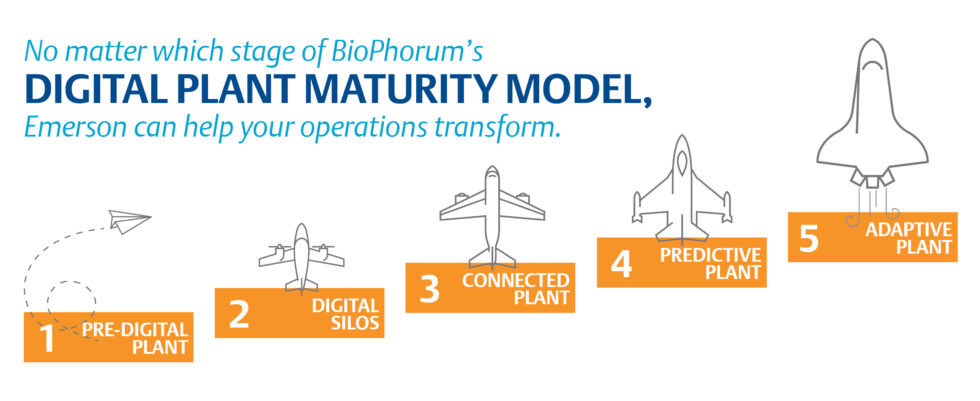To know where you’re going, you have to know where you are, and operating a life sciences manufacturing facility is no exception. Pharmaceutical processors regularly have to take stock of their technological capacity to keep a finger on the pulse of the four main drivers of operational excellence:
- Pipeline acceleration – the capability to quickly bring new products to market.
- Flexible manufacturing – maintaining a facility where it is possible to make multiple products, keeping it simple and easy to change from one product to the next to meet market needs.
- Operational integrity – being able to supply batches to customers on time and in full.
- Real-time release – the ability to quickly get products out of storage and into the hands of customers.
In an interview with Pharmaceutical Technology magazine, Emerson’s Michalle Adkins explains how BioPhorum’s Digital Plant Maturity Model helps manufacturers enable the strategies—including faster technology transfer—that unlock these four drivers.

One click technology transfer
Michalle shares that fast technology transfer is critical to speed to market, but that isn’t all. Fast technology transfer is also essential in successfully transferring parts of the manufacturing process from one facility to another. Historically, those two critical steps have been difficult because information is stored in spreadsheets and word processing documents. As a result, teams must manually extract information and input it into systems of record to move from stage to stage of treatment development. This can easily result in delays and errors.
Today, Michalle explains, many organizations are exploring the path to one click technology transfer (OCTT) to dramatically shorten this pipeline.
“One click technology transfer lets us put in process steps, and the activities associated with those process steps, and the materials and any important parameters about that step—critical process parameters, critical quality attributes, materials—to make sure that you download that information to the site that requires it.”
Digital maturity
So how does the Digital Plant Maturity Model fit in? The reality is that OCTT and the drivers of operational excellence will require technology, some of which plants might have today and some they will need to implement. Effectively implementing those technologies will require a roadmap, and building that roadmap starts with finding where the plant lands on BioPhorum’s model. Teams can see what kind of plant they are operating, from “pre-digital” all the way up to “adaptive plant.” And can compare that ranking against the technology they need.

Tools like Quality Review Manager software and Spectral PAT can help teams move closer to real-time release to capture competitive advantage in the marketplace, but they rely on other technologies to be in place as well. Once a team has a clear picture of plant technology, they can start planning for further advancements.
Michalle and her interviewer, Grant Playter, dig into a number of other topics around the life sciences technologies driving innovation and speed to market. It’s a quick 10-minute listen that will leave you with lots to think about. Head over to the PharmTech page and listen to the whole interview for a deeper dive.

